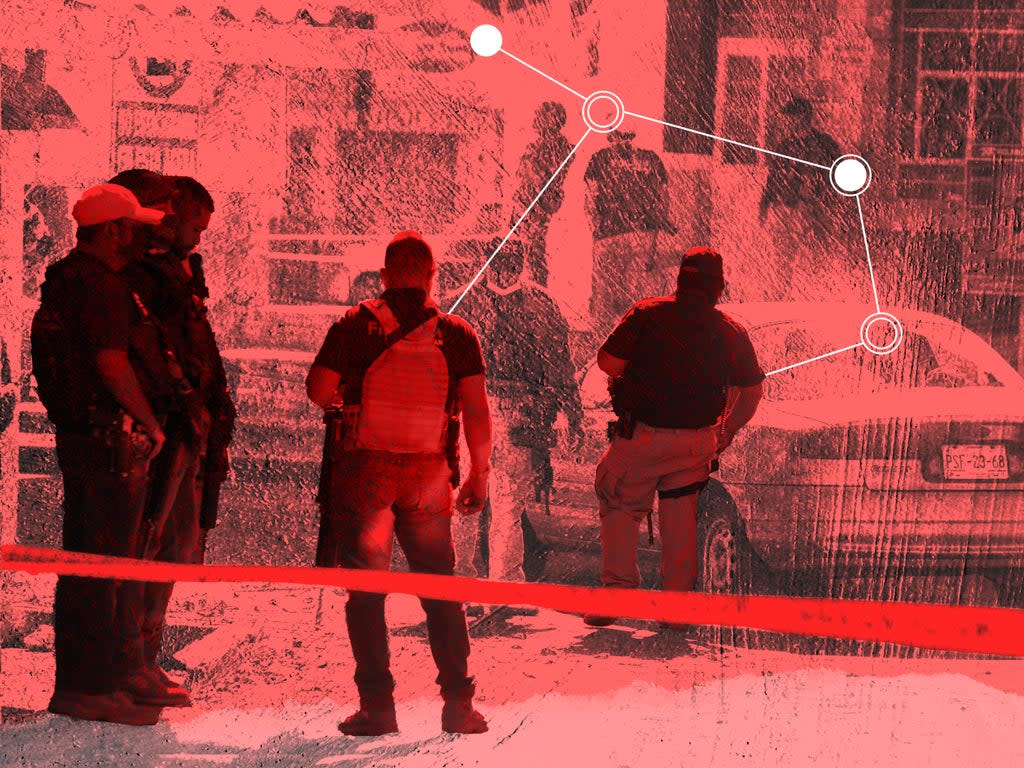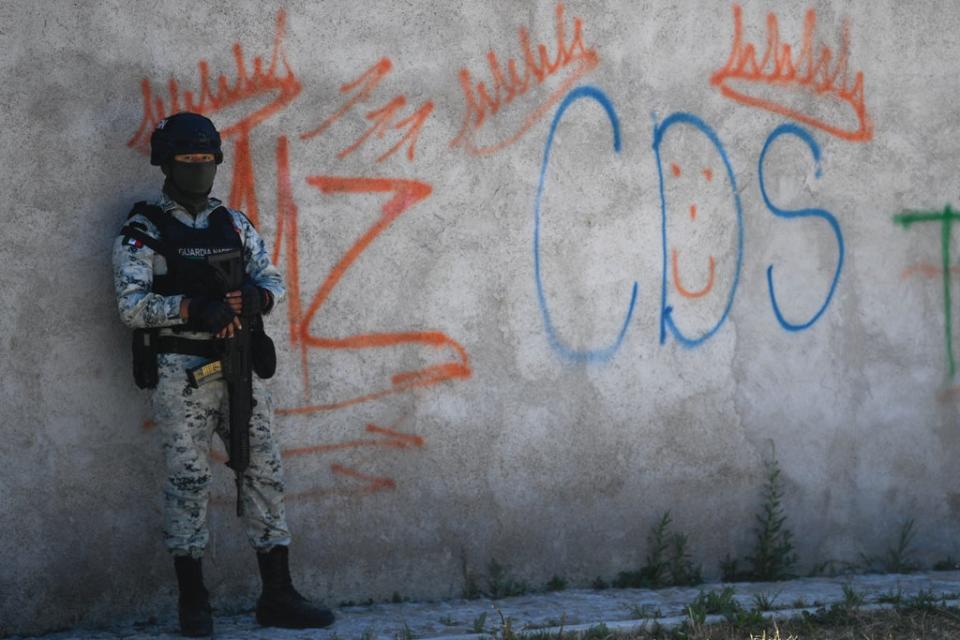Faces of the Sinaloa Cartel: Investigating the Mexico region ruled by the world’s most powerful drug lords

In northwestern Mexico lies a beast with a thousand heads. At times, calm; sometimes angry; but if confronted by mistake, it destroys everything in its path. It’s lethal. It’s the Sinaloa Cartel. An organisation that despite the arrests and murders of its main leaders, is still in force and is perhaps the most powerful criminal structure in the underworld. Independent en Español traveled to Culiacán to shed light in a territory that lives under the tyranny of the criminal enterprise led, to a greater extent, by Ismael “El Mayo” Zambada and some of the children of Joaquín “El Chapo” Guzmán. Among them, Iván Archivaldo and Jesús Alfredo Guzmán Salazar and Jesús and Ovidio Guzmán López. Independent en Español spoke with different protagonists of the political and public life of the Aztec land, and entered the most remote places of a city where no one kills, no one rapes, no one steals; where nobody does anything without the knowledge of “those above”. They have the power. They are in control.
“Apparently, nothing is going on here,” says the taxi driver as he cautiously enters Avenida de los Insurgentes, stops at Paseo Niños Héroes before reaching the University Stadium and adding: “The best thing to do is to wait and not honk your horn.” The traffic light stays green and no driver flinches. "You don’t know who’s coming in front of you," he says. This is how you live in the city of Culiacán, Sinaloa. In a tense calm. Organised crime has injected a kind of ‘civility of fear’ into the so-called “culichis”.
Contrary to its reputation, Culiacán is not a noisy or overwhelming city; at least not during the day. As the sun rises and the thermometer reads 31° C, motorists do not exceed the speed limit, young people listen to regional Mexican music but do not dare to play a “narcocorrido” on their motorcycle speakers; the waiters ask the necessary questions and no more, while street vendors do not insistently impose on potential customers. The State Police and even the National Guard patrol the area, but at night they all disappear. And the tense calm returns.
Time moves quickly in the capital and the Sinaloa Cartel knows this. Commanded largely by the sons of Joaquín “El Chapo” Guzmán and Ismael “El Mayo” Zambada, the Sinaloa Cartel is the only organization in the state that, for decades, has co-opted communities, authorities and a large part of the Sinaloa mountains to carry out one of the most thriving businesses in the underworld: drug trafficking. The city of Culiacán serves to measure the pulse of what is happening in other municipalities of the state, since it has the highest crime rate.
And not only that. In recent years, a strange stillness prevails. It is “la pax narca” or “the peace of the tombs”. A way of giving in to organised crime without the null application of the power of the State; an “unwritten pact” between the state or federal government and the drug barons, which ends up subcontracting the fate of citizens to the dynamics and criminal interests of “Los Chapitos”, “Los Ninis”, “Los Minions”, “Los Ántrax”, “Los Mayitos”, “Los Guanitos” and other groups and cells, all belonging to the Sinaloa Cartel and its main leaders.
The anti-crime policy of "abrazos, no balazos” (“hugs, not bullets") that the president of Mexico, Andrés Manuel López Obrador (AMLO), has repeated ad nauseam during his campaign and in his first three years in office not only failed resoundingly, but the permanence of this action plan is alarming, since it not only pretends to be ignored in the presence of large criminal organisations, but also ends up bending its strength, fracturing its structure and destroying its credibility. Giving in to the power of the Sinaloa Cartel or any transnational organised crime to reduce violence is a false start.

When AMLO insists that "Sinaloa is no longer one of the most violent states in Mexico," as he did during a state visit to the city of Mazatlán in March 2021, it is not because of the absence of violence, but because there is an excess of it. Organised crime controls practically everything in the city. A mobster cannot take a gun and extort money from local vendors because ‘floor charging’ is not allowed. A deserter from a criminal cell cannot independently produce or traffic drugs without the consent of "El Mayo" Zambada or the consent of the sons of "El Chapo" Guzmán. Nobody kills, nobody rapes, nobody steals. No one does anything without the knowledge of “those above”. They have the power. They are in control.
One of the tasks of the Sinaloa Cartel has been to manipulate citizens through this “blind peace”. They live under the oppression of an organisation that manages them at will with pantries, with financial support stained with blood and even with the delivery of toys on Children’s Day or at Christmas. As if they aspired to a position of popular election, the criminals appeal with their criminal propaganda.
Under this premise, very few were surprised that on 17 October 2019, heavily armed elements of the Sinaloa Cartel besieged the state capital to prevent soldiers from the Mexican Army from taking Ovidio Guzmán López, one of the sons of “El Chapo” Guzmán, who presumably commands a large part of the business of the organisation that his father founded in the early 1990s. The operation, which they called “Culiacanazo”, had serious political implications and sent a serious message to the population: the state cannot go against the power of drug trafficking, at least not in Sinaloa.
A few hours after the operation began, Ovidio Guzmán was released. The next day, it seemed that nothing had happened in the city. In June 2020, AMLO would assume his responsibility for this fact: "I ordered that operation be stopped and for that alleged criminal to be released." The firepower of the criminal organisation was superior to that of the Government of Mexico, since it involved very high caliber US military-made weapons: Barrett M82 semi-automatic rifles, .50 caliber, with an effective range of 1.2 kilometers and a speed of 853 meters/second. Lethal and powerful weapons. Hitmen trained to kill or die trying. A horror show.
Three months after the "Culiacanazo", the Sinaloa Cartel gave another example of the great power and influence it has. On 25 January 2020, behind closed doors in the Cathedral of Culiacán, gunmen from the organization guarded the first cadres of the capital city for the wedding between Alejandrina Giselle Guzmán Salazar, daughter of “El Chapo” Guzmán; and Édgar Cázares, nephew of Blanca Cázares, who is designated by the US as the alleged financial operator of “El Mayo” Zambada. As if tactical and operational capacity were not enough, the Sinaloa Cartel revealed that it also has the full support and complicity of ecclesiastical, municipal and state authorities. At whatever cost.
Before getting out of the vehicle, the taxi driver makes one final recommendation: "It’s better that you put your camera away and ask for permission." As if it were a survival manual, he repeats: “Apparently, nothing happens here… but everything happens here”. He looks in the rearview mirror and puts his hand to his forehead to wipe away the sweat. He seems nervous. "If those people from behind don’t come with you, they already told the ‘boss’ that one more journalist has arrived." A man nods, I reverse the gesture with a handshake from a distance. Everyone takes their course. It is 7 February and the sun is raging in the city, the thermometer is about to reach 31° C in Culiacán.
This story was originally published by Independent en Español in Spanish and has been translated to English for The Independent.

